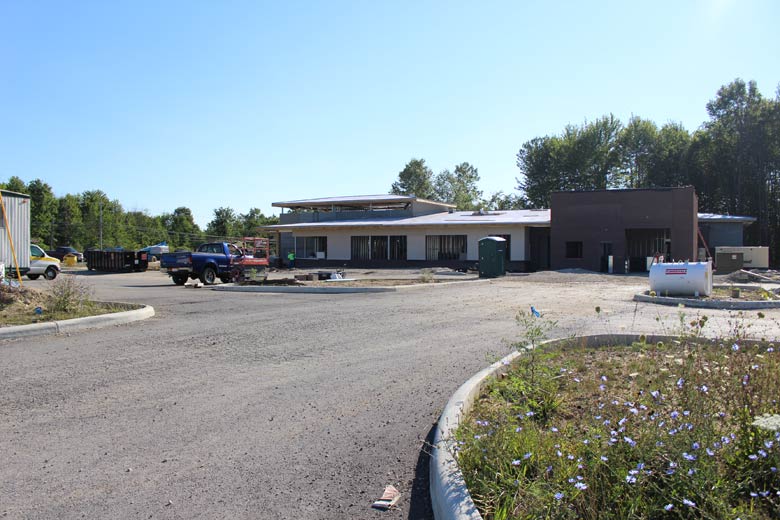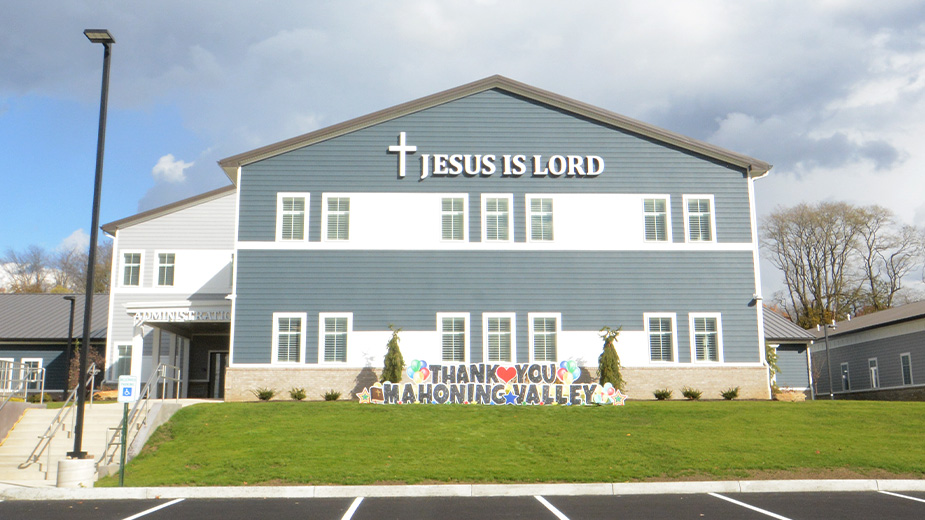OUPS Grows with Call Volume, New Headquarters
LIBERTY TOWNSHIP, Ohio — By all accounts, it started out as a routine waterline project on a duplex in Fairborn, Ohio, near Dayton, about six years ago.
In an effort to get the work done and done fast, the contractor failed to notify the proper utilities before excavation began. So it was essentially guesswork as to where the gas, electric and water lines were buried.
Instead, what should have been an easy project with few challenges turned tragic. As an operator maneuvered the backhoe, he struck a gas line in the basement and unknowingly pulled it apart. The building filled with gas, exploded and killed the contractor. His son and grandson were severely burned while four others – including three children watching television on the other side of the duplex – were also injured.
Even more tragic is that all of this could have been prevented with a simple phone call and a 48-hour pause.
“Instead of calling and waiting the 48 hours, the excavator didn’t want to lose the work to someone else,” says Roger Lipscomb, president of the Ohio Utilities Protection Service, or OUPS, based in Liberty Township. “So, he started digging.”
The tragedy in Fairborn underscores the importance of Lipscomb’s organization – today a communications hub that in some cases could mean the difference between life and death.
OUPS acts as the one point of contact for information related to any excavation activity across Ohio, Lipscomb says. Once a call comes in – users simply dial 8-1-1 to reach an operator or fill out the information online – OUPS immediately dispatches notifications to public and private utilities informing them of the project.
These utilities then gather the information, and within 48 hours arrive on site and mark the pathway of all buried utility lines before digging begins.
Under Ohio law, anyone performing any excavation within the state must notify the utilities, Lipscomb says. Updates to the law Gov. John Kasich signed in 2014 can mete out stiff penalties to those excavators or entities that don’t comply.
For example, a first offense could cost someone $2,500 if found in noncompliance. A second offense could result in a fine of $5,000, and should the party be deemed in “habitual noncompliance,” the offender could face a fine of $5,000 plus another $10,000 imposed by the Public Utilities Commission of Ohio.
In the end, Lipscomb says, the law has helped foster a cultural and behavioral change across the industry, which has led to safer, more secure worksites.
“It’s getting people to do the right things for the right reasons,” he says. “We’ve seen a really low number of compliance failures. It’s caused a lot of people to clean up their act.”
Today, OUPS boasts just under 1,500 members, Lipscomb says. Local governments, municipalities, contractors, and all of the major utility companies belong.
“We also have a lot of campus environments where private utilities are. Ohio State University is a member,” he says, because many of its utilities cross public rights of way. “Prudential Insurance is a member because they own a big, private fiber network. A lot of the K-12 school systems in Ohio are members,” he says.
On average, OUPS notifies seven entities for a single excavation project. Each time it issues a notification, the utility pays a fee. Municipalities, for example, are charged 21 cents per notification and big cities such as Cleveland or Cincinnati could receive 200,000 notices per year. Larger utilities such as AT&T pay about 98 cents per notification, he says.
“We might send AT&T – which has customers all across the state – about a half million notifications in a year,” Lipscomb says. Last year, the organization took in 1.3 million requests for excavation, which translates into about 8.8 million notices. “That’s 8.8 million times somebody could have dug into a buried line and hurt someone,” he says.
Even homeowners who install a mailbox, for example, must comply with state law and make that call before they dig, says Lee Richards, public awareness and education supervisor. “One thing that a lot of homeowners don’t realize is where you place your mailbox is usually right where all the mains are running along the street,” she says. “There are a lot of facilities buried under there.”
And the volumes of calls keep increasing, Lipscomb observes, which results from stepped up development activity across the state and stricter regulations. Since the Great Recession of 2008-09, when excavation activity tumbled along with new construction and development, there have been only two years when OUPS hasn’t produced record numbers.
“So far this year, we’re about 5% ahead of last year, which was an all-time record year for excavation activity in the state of Ohio,” Lipscomb says.
New housing developments, commercial construction and widespread infrastructure improvements across the state have helped accelerate excavation work.
“It’s a key indicator of what’s happening with the economy,” Lipscomb says. “We’ve seen subdivisions that have sat five years dormant, and over the last two years have 40 or 50 houses now, and we’re seeing new subdivisions being cleared.”
The Liberty campus acts as a command central for all of this – monitoring all legal digging activity throughout the state and alerting the proper utilities. But the growth of the organization has pushed it to its limits at OUPS’ address on Belmont Avenue.
By Thanksgiving, the organization should be relocated to an 18,000-square-foot office complex and call center under construction on Bailey Road in North Jackson.
“Great things have happened to the organization over the last several years,” Lipscomb says.
OUPS was established in 1972 as a statewide call center based in the Mahoning Valley. “In 1972, Youngstown was a hopping place,” he recalls.
Big Steel was still thriving as the region served as a nexus of railroad and highway networks. More important, many of the utility companies had headquarters in the region. Before OUPS was founded, each fielded calls separately with little awareness of the calls placed to other utilities.
It made more sense to create a single point of call that could then transmit the information to the three founding members of OUPS – Ohio Bell, Cleveland Electric Illuminating Co., and East Ohio Gas. “We started to hire more people and became this consortium,” Lipscomb says.
OUPS employs 50 or so in Liberty, and that number increases during the high construction season.
Once a call comes in, technicians isolate the area through a digital mapping system. When the worksite is identified, the software displays all of the affected utilities that require notifications, says Tom Hackstedde, supervisor of information technology.
“We have information for all 88 counties in Ohio,” he says.
The organization has expanded well beyond its initial parameters, Lipscomb says, as it works with the U.S. Department of Transportation on pipeline issues, the Ohio Department of Natural Resources, Homeland Security, and the FBI.
“During the Republican National Convention, we were working closely with the FBI and Homeland Security for almost two years behind the scenes,” he says, ensuring that any new contractors’ names were given to authorities for proper vetting.
“There was a lot of activity like that,” Lipscomb says. “We’re seeing growth in the organization because of all of the other things that weren’t considered 30 years ago.”
Pictured at top: Construction nears completion on the $3.2 million OUPS headquarters project at the Youngstown Commerce Park.
Copyright 2024 The Business Journal, Youngstown, Ohio.



